#gödöllö
Explore tagged Tumblr posts
Text

Waldschlag Bei Gödöllö by Theodor Von Hörmann (1879)
25 notes
·
View notes
Text

Forest felling near Gödöllö - Theodor von Hormann , 1879..
Austrian, 1840-1895
Oil on canvas , 34.5 x 57.5 cm.
135 notes
·
View notes
Text
Elisabeth had at her disposal an annual "play money" of at least 250,000 guilders - the equivalent of around 3.6 million euros - with her annual empress's allowance of 200,000 guilders in "donations" and 50,000 guilders in fixed "hand expenses". However, she did not spend this money, but rather made it "work". It is interesting to note that although Elisabeth, in her romantic disposition, liked to escape into a fantasy world and gave the impression of having no connection to earthly things, she was absolutely down-to-earth when it came to money matters and proved to be a smart investor. Already since 1870, she had invested a portion of her allowance in the banking house of S.(alomon) M.(eyer) Rothschild in Vienna. A securities account statement shows that in 1870, 1.2 million guilders were largely invested in bonds issued by various railroad companies, insurance companies and banks, which generated an annual return of around 150,000 guilders. Just how successful her "fund management" was is shown by an account opened in 1872 in the name of "Georg Graf Festetics" (after the elder brother of her lady-in-waiting Marie Festetics), which was opened with 576,000 guilders and was worth 1.1 million in 1880. Her total assets with Rothschild at her death amounted to 3.6 million guilders, which is roughly equivalent to 62 million euros. She also did not use the two million guilders that she received from her husband in 1875, when Franz Joseph inherited from his rich uncle Emperor Ferdinand, for her expensive travels, which were financed throughout her life by the Emperor, instead she also invested this money: one million in gold Pfandbriefe, with which, according to its annual accounts, she made a healthy profit of 317,000 guilders as early as 1880. She invested the rest in bonds issued by the Austrian State Railways, Donau Dampfschifffahrtsgesellschaft and Alpine Montan, making a profit of 460,000 guilders by 1884. She also came up with pseudonyms for her accounts at the Erste Österreichische Sparkassa. One account was named "Hermenegilde Haraszti" (after a piece of forest near Gödöllö). By 1885, Empress Elisabeth had turned the two million into a fortune of 3.5 million, which steadily increased and by 1892 amounted to almost four million guilders. At her death in 1898, she had a private fortune of ten million guilders - the equivalent of 173 million euros.
— Katrin Unterreiner (2023). Sisi: Das geheime Leben der Kaiserin (DeepL Translation)
#empress sisi#empress elisabeth of austria#elisabeth of austria#rothschilds#19th century#history#quotes#*elisabethofaustria
3 notes
·
View notes
Text

Zara. Riva Nuova col piroscafo Gödöllö
14 notes
·
View notes
Text
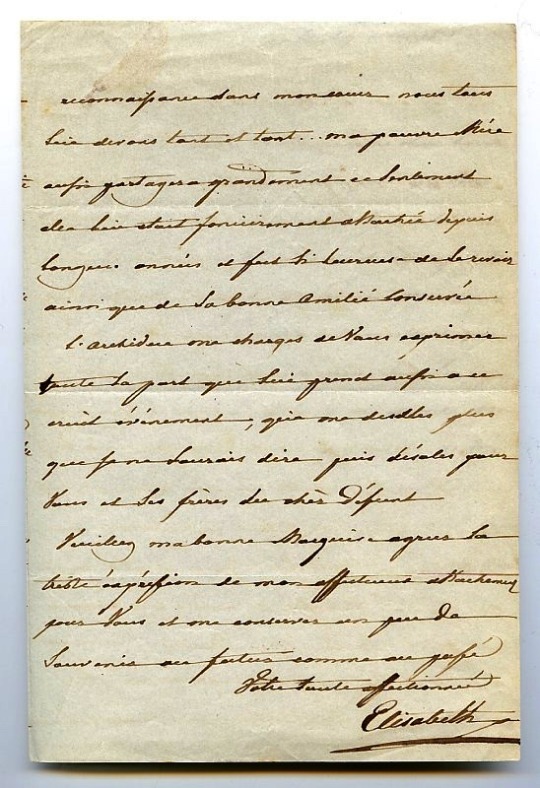
Abandoned
How was I once so young and rich
Of joie de vivre and hope;
I didn't think anything of power was like me,
The world was still open to me.
I loved, I lived,
I've been all over the world. But never achieved what I strive for.
I cheated and I was cheated.
- poem by Sissi (Gödöllö 1886)
(the photo shows a different poem written by her)
#sissi#sisi#empress elisabeth of austria#sad poem#poetry#poem#19th century#hungary#lana del rey aesthetic#coquette aesthetic#coquettecore#coquette#femalerage#female hysteria#empress sissi
4 notes
·
View notes
Text

‹Sisi› - Elisabeth von Österreich-Ungarn
Kurze Einführung in ihre Biografie
Am 10. September 1898 verlässt Kaiserin Elisabeth von Österreich zur Mittagszeit ein Genfer Hotel, um über den See nach Montreux zu fahren. Ihre Hofdame, die Gräfin Sztáray, gibt später zu Protokoll: “Beim Hotel ‘De la Paix’ kam ein Mann auf uns zu. Unmittelbar vor uns schien er plötzlich zu straucheln; er machte eine Bewegung mit der Hand. Ich glaubte, um sich beim Stolpern aufrecht zu halten. Die Kaiserin sank zu Boden. ‘Es ist mir nichts geschehen’, antwortete sie ruhig. Wir erreichten die Anlegestelle. Plötzlich sagte sie mit erstickender Stimme: ‘Jetzt, Ihren Arm, schnell, bitte!’” Kaiserin Elisabeth stirbt noch auf dem Fährboot. Ein kaum bemerkter Stich mit einer spitzen Tischlerfeile hat sie mitten ins Herz getroffen. Der italienische Anarchist Luigi Lucheni verhehlt seine Befriedigung nicht, ein so prominentes Mitglied der verhassten Aristokratie ermordet zu haben. Elf Jahre nach seiner Verurteilung zu lebenslänglichem Kerker erhängt sich Lucheni in seiner Zelle. Die 60-jährige, von Depressionen geplagte Kaiserin hat mehrmals Todesahnungen geäußert, aber Polizeischutz für ihre Reisen abgelehnt. Zu ihrem Schwager, dem Herzog von Alecon, sagte sie, kurz vor dem Attentat: “Wir werden eines gewaltsamen Todes sterben…”
Elisabeth ist die Tochter des bayerischen Herzogs Maximilian von Wittelsbach und seiner Frau Ludovika. 1853, mit 15 Jahren, wird Sisi, wie man sie allgemein nennt, überraschend zur Gattin des österreichischen Kaisers Franz Joseph auserkoren. Der junge Monarch hat sich Hals über Kopf in die kleine Schwester der ihm zugedachten Helene verliebt. Sisi, später oft als eine der schönsten Frauen ihrer Zeit tituliert, ist fröhlich, witzig und ungestüm. Ihre Jugend hat sie fast ausschließlich auf dem Landsitz in Possenhofen verbracht. Ihr Vater, der nichts von aristokratischer Erziehung hält, hat einmal zu ihr gesagt: “Wenn du und ich nicht Fürsten wären, wären wir zweifellos Reiter in einem Wanderzirkus!” Es ist daher nicht verwunderlich, dass sich die junge Kaiserin nur schwer mit dem Wiener Hofzeremoniell und der strengen Schwiegermutter Sophie zurechtfinden kann. Sisi bringt vier Kinder zur Welt: die Prinzessinnen Sophie und Gisela, Thronfolger Rudolf und Marie Valerie. Sobald diese dem Kindesalter entwachsen sind, nutzt sie jede Gelegenheit, um ihren repräsentativen Pflichten zu entgehen. Franz Joseph toleriert die Lebensweise seiner Frau, die ihre Zeit am liebsten mit Kuraufenthalten und ausgedehnten Reisen verbringt. Elisabeth, die auch gerne Gedichte schreibt, verfällt immer mehr in tiefe Melancholie, die sie ihrem Cousin, dem unglücklichen Ludwig II. von Bayern, seelenverwandt macht. Nach dem Selbstmord ihres Sohnes Rudolf zieht sich die beim Volk beliebte Kaiserin gänzlich vom Hofleben zurück. In den Zeitungen kursieren immer häufiger Meldungen über eine fortschreitende Geisteskrankheit Elisabeths. Sie zeigt aber auch Besonnenheit und Toleranz, nicht zuletzt dadurch, dass sie ihrem vernachlässigten Gatten Franz Joseph den Umgang mit der Burgschauspielerin Katharina Schratt empfiehlt. Sie selbst lässt sich auf der Insel Korfu einen eigenen Palast, das Achilleion, errichten. Viel Zeit verbringt die Kaiserin auch auf Schloss Gödöllö in Ungarn. Ihre Vorliebe für die Magyaren und ihr Nahverhältnis zum Revolutionär Andrássy haben jahrelang immer neuen Gerüchten Nahrung gegeben. Die große Leidenschaft von Elisabeth ist aber zeitlebens das Reisen. Sie führt die Kaiserin im Herbst 1898 nach Genf, wo sie der Tod ereilt.
Quelle: Siehe Link im Titel
0 notes
Video
Gödöllő, Hungary
45 notes
·
View notes
Photo

The Royal Palace of Gödöllö
#500px#Castle#Gödöllö#Hungary#Ungarn#Empress Elisabeth#Sisi#trees#sky#clouds#historical#palace#Grass
2 notes
·
View notes
Text
Les scouts du monde au jamboree de Gödöllö (1933)
Les scouts du monde au jamboree de Gödöllö (1933)
Le jamboree de Gödöllö est en quelque sorte le triomphe du camping. Nul n’ignore, certes, que les scouts sont de fervents adeptes de ce sport et le pratiquent depuis des années avec un enthousiasme grandissant. Mais les organisateurs de la réunion scoute mondiale actuelle ont voulu que le jamboree tourne autour de l’idée du camping. Il est certain que de tous côtés s’élèvent des camps dont…

View On WordPress
0 notes
Text
Welterbe aufgespürt und erfahren - H - Puszta

Hortobágy-Nationalpark - die Puszta Die Puszta ist das größte und bekannteste mitteleuropäische Steppengebiet. Wir unternehmen einen Tagesausflug von Budapest aus und kommen unterwegs an zwei weiteren interessanten Orten vorbei. Seit 1999 steht die Puszta auf der UNESCO-Welterbeliste. Ein Video zur Einstimmung könnt ihr hier sehen. Die fast 75 Tausend Hektar große Ebene ist ein herausragendes Beispiel für die Bewahrung der über die Jahrhunderte gewachsenen Landnutzung und der harmonischen Interaktion von Mensch und Natur. Auf den alkalischen Wiesen und Feuchtgebieten werden seit alters her auch heute noch spezielle Tierrassen gezüchtet und jedem sind die typischen Fotos mit den Ziehbrunnen aus dem Geografie-Unterricht bekannt. Eine ausführliche Beschreibung, Begründung und Fotos findet ihr hier. Wir brechen zeitig von Budapest auf, um unser eigenes Puszta-Foto und einen Eindruck von der großen Steppe mit nach Hause zu nehmen. Unterwegs, fast auf der Strecke, liegt das kleinen Städtchen Gödöllö, in dem sich Kaiserin Sissis liebstes Sommerschloss befindet. Hier ist, weil Wien noch auf dem Reiseplan steht, ein Stopp natürlich ein Muss. Das Schloss empfängt uns im strömenden Regen, deshalb hier nur ein Blick auf die Fassade und kein Rundgang durch den Park. Interessant wird die Fahrt, als wir durch das Gebiet der großen Seen und Sümpfe der Theiß kommen. Im Städtchen Tiszafüred (ein Tipp aus der ADAC-Maps-App) gibt es tolle Radwege um die Seen und durch die Moore. Read the full article
0 notes
Text
Where to go from Budapest for 1 day - 12 most interesting places
New Post has been published on https://tripsterguru.com/where-to-go-from-budapest-for-1-day-12-most-interesting-places/
Where to go from Budapest for 1 day - 12 most interesting places
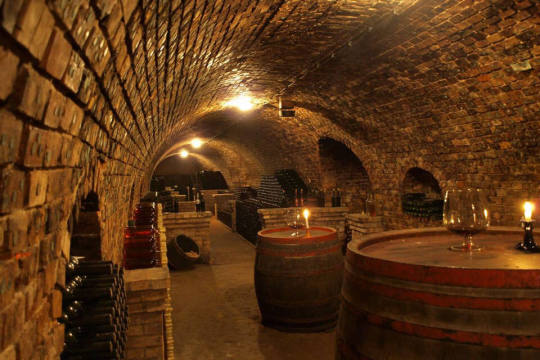
A small but amazing country with an interesting, dramatic history occupies an unusually picturesque territory, with a diverse landscape, a generous wealth of nature and extraordinary musicality. One of the greatest rivers in Europe flows through Hungary – the Danube, where all Hungarian rivers flow. Being in the Hungarian capital Budapest, you can make day trips from it to interesting places in Hungary and neighboring states. So, we’ll tell you where you can go from Budapest for 1 day on your own.
Eger
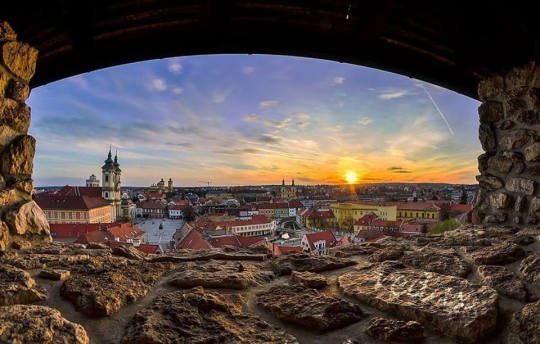
130 km from Budapest is the old town of Eger, which allows you to plunge into the ancient history of the country with its authentic look. Now Eger has become a place of tourist pilgrimage, thanks to the presence of famous baths, a developed winemaking culture and an abundance of rare sights. To make a vivid idea of this wonderful corner of the country, you should see the following attractions:
Eger Castle – a kind of monument to the heroic history associated with the invasion of the Mongols (1241 g) and the Turks (1552 g). Now the castle, which is a museum, looks very picturesque, a tour of it – an insight into the glorious past of an amazing country.
Eger Basilica is a Catholic church whose beautiful building is built in the neoclassical style, officially named after St. John the Apostle and Evangelist and today is the cathedral of Eger. Visiting a church leaves a deep impression.

The valley of beauties, famous for its wine cellars and wonderful local wines – a beautiful suburb of Eger – a real paradise for wine lovers and just tourists. Here they are treated to the best varieties of wine with delicious national dishes in a romantic setting created by the performances of virtuoso musicians performing exciting gypsy melodies. It is assumed that the name of the place was due to the arrival of many beautiful women here.
The minaret church, located on the central square of Istvan Dobo, captivates with its magnificent baroque beauty, both external and internal. On 2 bell towers (minarets), the clock is beaten 3 times a day, the frescoes (16th century) and the amazing sculpture of st. Anthony.
Aggtelek National Park

In the city of Tokai, famous for its wine, there is the no less famous Aggtelek National Park with unique karst caves (200 objects) and an amazing relief of the surroundings. The flora and fauna of the reserve are unique: trees and shrubs grow here, which you will not see in other areas, 400 species of rare birds live.
The extraordinary beauty and amazing natural design of the caves attracts a huge number of tourists, among whom there are many cavers, both professionals and amateurs. The reserve is a real treasure for archaeologists who are convinced that the mysterious caves served as a dwelling for 7 thousand years. Now a sanatorium has been opened here, where, based on a special microclimate, diseases of the respiratory system are treated. And the unique views of the reserve, the ethereal fabulousness of the caves give peace of mind and joyful delight.
Esztergom and Maria Valeria Bridge
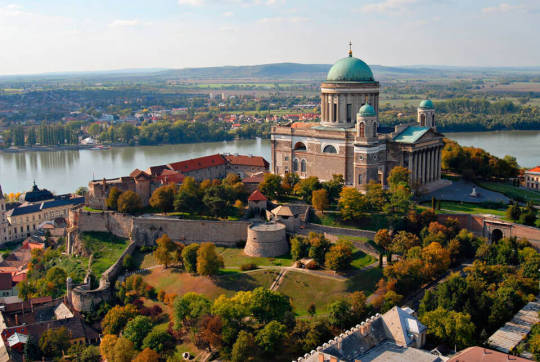
A small ancient town, which saw within its borders both Celts, Romans, and Germans, can be called a historical Stoic. The city, which survived the barbaric destruction and ruin by the Turks, fascists, rose from the ashes, like the Phoenix, and now is a symbol of the great history of the state, embodied in architectural and religious monuments. Here was born the first of the Hungarian kings, Istvan, who became a saint after life (his appearance is immortalized in a majestic monument).
The main one is the Basilica of St. Adalberta is a colossal structure (height 71.5 m, width 40 m, length 118 m), visible from afar. The majestic temple was built on the site consecrated by previous churches and is the third shrine of Europe, striking in its scale, the beauty of architecture and spiritual fullness. Below, in the script lies the ashes of great historical figures, in the treasury are stored old church items, vestments of priests – valuable rarities.

Like Esztergon himself, the bridge, named after the daughter of the Hungarian emperor Franz Joseph, is a symbol of resilience. Built in 1895, it was destroyed 2 times (1920, 1945) and restored again. The 500-meter-long ribbon of the bridge, picturesquely spread over the majestic Danube, connects Esztergon with the Slovak city of Sturovo (a very convenient crossing). A visit to the Archbishop’s Palace, a magnificent neoclassical-style building, will enrich spiritually and aesthetically. The expositions of the Christian Museum will conquer with richness and variety of works of Hungarian art, canvases of Italian Renaissance painting and other unique exhibits.
Szekesfehervar

“Alba Regia” – so beautifully in Latin this city was first called, built in 970 by the Hungarian prince Gesa among impassable swamps. The city was to become the cradle of Hungarian statehood and Hungarian kings (30 coronations took place in it), the first capital of Hungary. Traveling around Szekesfehervar, you are convinced that this is a museum city, where at every step there are monuments and monuments. On the main square of Varoshkhaz there rises the most beautiful building of the Episcopal Palace, on the contrary – the “Power” – a huge monument of royal power, crowned with an elegant crown and an inscription glorifying Istvan. Climbing to the observation deck (from the edge of the square), you can see the stunning panorama of the “royal city”.
The main city cathedral Istvan (Baroque style) amazes with its rich decoration and outstanding works of great masters that adorn the interiors of the church. Nearby are 2 more churches, which are also worth a look. The mushroom-like building – Bori Castle – the most unusual architectural structure of the city, created by the imagination of the local architect and sculptor Yeno Bori, makes an irresistible impression with its appearance. The elements of Romanesque, Gothic and Scottish castle styles are intricately intertwined in it. The castle can be admired endlessly.
Szentendre + Vysehrad

If you do not visit the beautiful Hungarian town of Szentendre, located in the picturesque bend of the Danube, you can not fully get acquainted with the history of this unique country. This cute town reflects the history of the Serbs, hiding from the brutal invasion of the Ottomans and finding shelter in Hungary. Here, all that was left of their legacy is made in Serbian traditions: narrow cobblestone streets, painted facades with baroque decorations, red tiled roofs – everything is very picturesque, like in children’s pictures.
Szentendre – the unofficial art capital of Hungary – many galleries and museums showcase paintings and sculptures by many artists brush and cutter. Here, literally every house, every building is a structure with an original design, from which it is difficult to look away. A walk along the picturesque streets is a great pleasure, as well as a visit to the one-of-a-kind Museum of Marzipans.

The city of Vysehrad, located near Setendre, arose from the Vysehrad fortress, erected on top of a mountain in the 13th century. as a protective structure. Only one watch tower (Solomon’s tower) has survived to the present day in its entirety, in which, according to legend, the infamous Count Dracula spent years imprisoned. Near the coast of the Danube you can see the ruins of the famous architectural masterpiece made of red marble (15th century) – the Palace of King Matyash Korvin. He impressed everyone with his irresistibly beautiful view and was considered the most luxurious in Europe. Now the restoration of the palace continues as a priceless cultural and historical monument.
Gödöllö
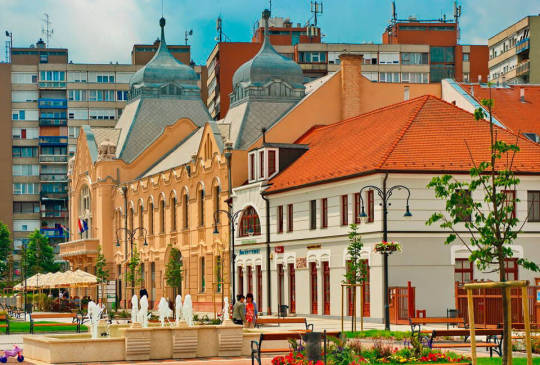
The town of Gödöllё is especially interesting for visiting because it houses a magnificent royal palace with a cozy park adjoining it, along which Empress Elizabeth, the wife of Franz Joseph, once beloved by the Hungarians, was walking. In her honor, there is a graceful sculpture of a slender, full of noble grace of a girl under an umbrella, proudly looking at a magnificent estate; her name is called the park. Inspection of the inner chambers of the palace is a breathtaking tour of the halls and bedrooms of the imperial persons, shining with the dazzling beauty of the interiors, elegant stucco molding and other decorations. A special thrill is the inspection of Sisi’s private rooms, objects, things that surrounded this amazing woman during her life. A trip to Gödöll – a lot of romantic experiences!
Heviz

A 3-hour drive from Budapest is located no less famous than Balaton, Lake Heviz and the resort of the same name. It is worth coming here for 1 day to see the bewitching beauty of nature surrounding the thermal lake, rich in healing mud and mineral water of various kinds. Here you can admire truly magical landscapes, equally beautiful at any time of the year, drink healing water, take a walk around the city, drowning in a flower kaleidoscope of various shades.
The city of Heviz is the embodiment of a rich historical past, therefore there are many interesting historical sights here. After a walk, you can relax in one of the many innkeepers, sample local wine and have a delicious Hungarian meal before returning to Budapest.
Pannonhalm Abbey
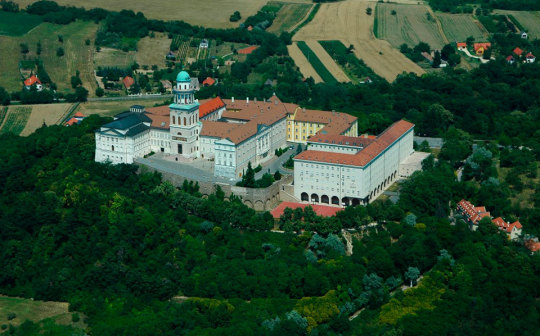
Located on top of Mount St. Martina, the Catholic Abbey of Pannonhalm is the second largest in the world with the oldest monastery in Hungary, in the history of which the whole history of the state is embodied. Many times, the buildings of the abbey were rebuilt, and as a result, the features of various architectural styles were combined in their appearance.
The most famous landmark of Pannonhalm Abbey is the monument basilica (13th century). After several reconstructions, the ancient church delights the eyes with the luxurious beauty of the interior. The monastery library, where a collection (360 thousand volumes) of books is stored, among which are the most valuable tomes, is amazingly large in book collections. A visit to the abbey is an amazing immersion in the great and dramatic history of the Hungarian state.
Lake Balaton
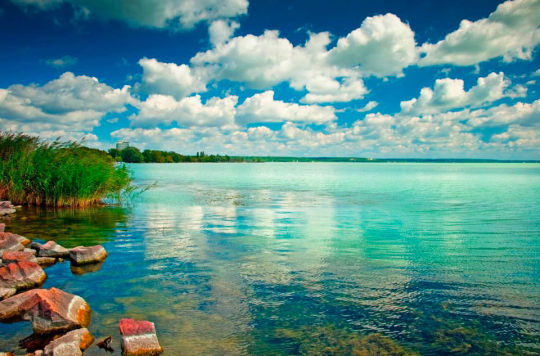
It is unlikely that there will be at least one tourist who has not visited the famous lake while traveling in Hungary. Balaton is not inferior to Baikal in fame, although it is much smaller than it. Lace of romantic legends is woven around a unique lake, which was still popular among the ancient Romans because of its natural wealth and amazing landscape beauty.
In the vicinity of Balaton there is a national park located on the Balaton Upland, with a unique relief of volcanic origin. In it you can see ancient craters, asleep volcanoes, beating fountains of geysers. Here, even the air has healing power, so they come here to treat the respiratory system. Around the green vineyards, many different attractions. A trip to Balaton is a pleasant and rewarding 1-day trip.
Pecs
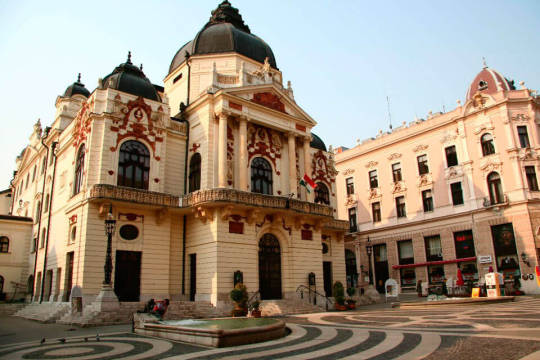
The cultural capital of Europe – the city of Pecs, dating back to the ancient Romans, is famous for its ceramic factory Zholnai, the earliest Christian burial in Europe (on St. Istvan Square), which was included in the UNESCO list and its unique attractions. On Secheni Square is the Parish Church of Belvaros and the Column of the Holy Trinity. Opposite the majestic administrative building stands a monument to the outstanding commander of the troops (15th century) Janos Hunyadi. On pl. Koshuta interesting objects – Town Hall, Synagogue; on Domsky square – Romanesque Cathedral of St. Peter and Paul. For 1 day it is impossible to inspect all the monuments, which are abundant here.
Bratislava

Given the wide choice of transport links between Budapest and Bratislava, you should definitely take advantage of this and visit a beautiful city that literally “blossomed”, becoming the capital of Slovakia. A huge number of restored architectural monuments of the Middle Ages, churches, squares made Bratislava a popular destination for tourists around the world.
It is impossible to visit all the interesting places in a day, but you cannot but visit the Main and Franciscan squares, look at the Jesuit Church of St. Savior, Town Hall, Slovak National Theater. From a distance you can see the Castle Hill with the castle “Bratislava Castle” towering on it, popularly called the “inverted table”. A visit to the Gothic Cathedral (House of St. Martin), the Michal Gate will transfer to the 14-15 century. in. The most exciting, unforgettable experience will remain from a trip to the beautiful Bratislava.
Zagreb

The Croatian Zagreb attracts tourists with its special flavor, unique charm of individual places and the calm beauty of streets, buildings, squares. Tourists note the extraordinary cleanliness of the sidewalks, on which you will not see an abandoned cigarette butt or a plastic bottle – the inhabitants of Zagreb love their city. Here, where many styles are intertwined in architecture, there is something to see, and it can take several days to inspect.
A one-day voyage around Zagreb is worth spending in the most atmospheric district of Dolniy Grad, which reflected the historical and Catholic past, cultural development and current trends of Croatia. Ban Josip Jelacic’s square (a monument was erected for him), surrounded by picturesque buildings, is the city’s busiest place. Young people make an appointment here, tourists gather, parents walk with their children, concerts are held in the evenings, where street musicians compete in the virtuosity of performing various melodies.
At the local restaurant or bar (there are a great many of them) you can taste national snacks and dishes. At the farmers’ market (adjacent to the square) there is a bright abundance of vegetables, fruits, cheeses. As a symbol of the country’s agrarian nature, at the entrance to the “fruit and vegetable paradise”, a non-feminine powerful sculpture of a collective farmer with a huge basket on her head greets everyone – the personification of painstaking labor and the bounty of the earth. The Catholic Zagreb Cathedral, which underwent a complete reconstruction after the 1988 earthquake, is unusually beautiful. The huge glass monolith of the Dubrovnik hotel in the Art Nouveau style is of interest. From visiting Zagreb – only pleasant memories!
#Aggtelek National Park#Bratislava#Eger#Esztergom and Maria Valeria Bridge#Gödöllö#Heviz#Lake Balaton#Pannonhalm Abbey#Pecs#Szekesfehervar#Szentendre + Vysehrad#Zagreb
1 note
·
View note
Photo

The Royal Palace of Gödöllö by HJB_FDS Aerials Harrogate
0 notes
Photo

The Royal Palace of Gödöllö by HJB_FDS
0 notes
Photo

The Royal Palace of Gödöllö by HJB_FDS
0 notes
Photo









The castle of Queen #Sisi in Hungary – Gödöllo’s Grassalkovich Castle The #Gödöllö Palace is one of the most important, and largest monuments of Hungarian palace architecture. Its builder, Count Antal Grassalkovich I (1694–1771) was a typical figure of the regrouping Hungarian aristocracy of the 18th century. He was a Royal Septemvir, president of the Hungarian Chamber, and confidant of Empress Maria Theresa. (1740–1780). The construction of the castle began around 1733, under the direction of András #Mayerhoffer (1690–1771) a famous Austrian builder, who worked in Zopf and Baroque style.
7 notes
·
View notes
Photo

Kaiserin Elisabeth (Sisi) von Österreich - Ungarn #austria #vienna #wien #monarchie #ungarn #gödöllö #schönbrunn #sisi #wienerhofburg #kaiserfranzjoseph #kaiserreich #österreich #kaiserinelisabeth #budapest #bayern #wittelsbach #königreich
#ungarn#wienerhofburg#österreich#schönbrunn#vienna#kaiserreich#wien#kaiserfranzjoseph#gödöllö#austria#monarchie#königreich#kaiserinelisabeth#bayern#sisi#budapest#wittelsbach
7 notes
·
View notes